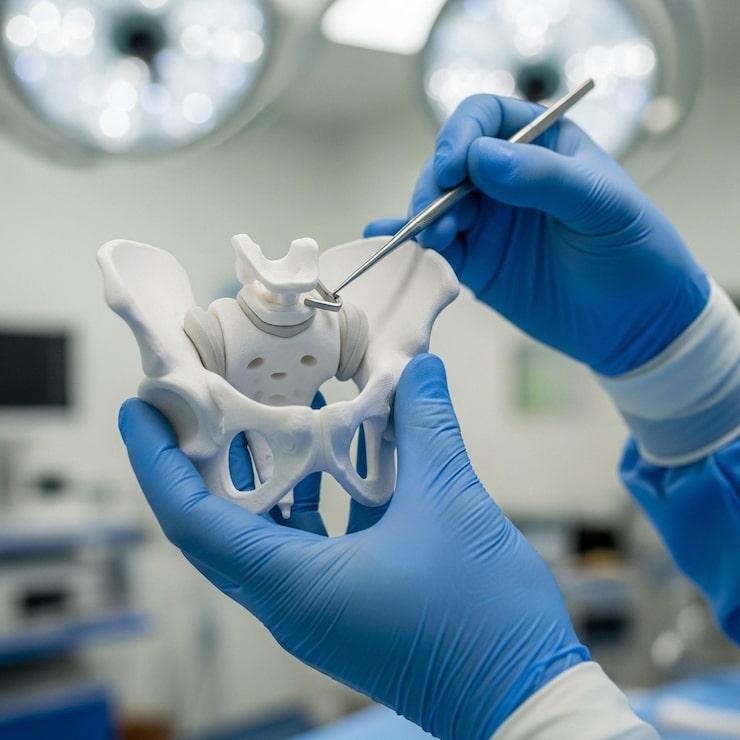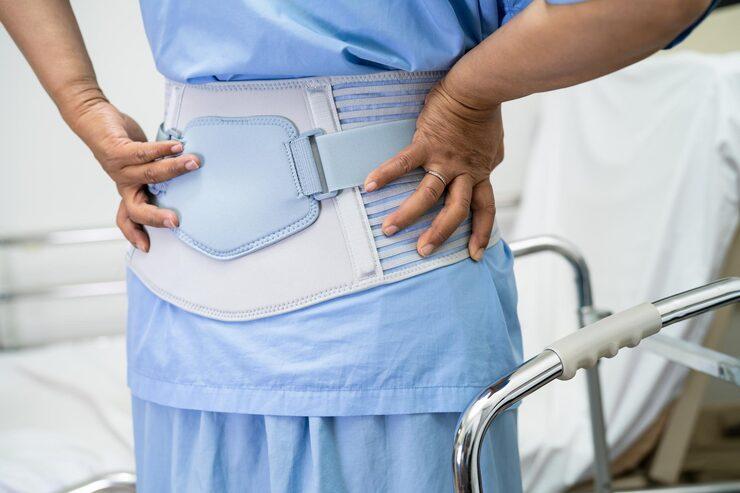
Anatomical model of a hip bone
The hip joint is one of the biggest and most significant joints in the body. It holds up the body's weight, lets the legs move easily, and lets people accomplish activities like walking, sitting, and climbing. But arthritis, injuries, and just getting older can all hurt the hip joint. This can hurt a lot and make it hard to move.
Doctors may suggest hip replacement surgery if drugs, shots, or physical therapy don't work anymore. This orthopedic procedure has changed the lives of millions of individuals all over the world. It has made them move about more easily, hurt less, and have a better quality of life.
Hip arthroplasty, which is also called hip replacement surgery, is a surgery that puts an artificial implant in place of a broken or damaged hip joint. The new joint is made to work like a regular hip, which makes it easier and less painful to move.
There are usually three pieces to a prosthetic hip:
These parts can be constructed of metal, ceramic, or high-quality plastic, depending on the patient's health and lifestyle.

Patient wearing waist band post-surgery
It takes time for most people to get better, but they do get their independence back in a few weeks.
Most people who have hip replacement surgery see big changes in their lives, such as less pain that lasts for a long period.
1. How long will a new hip last?
Most hip implants survive 15 to 20 years, but new technology is making them stay even longer.
2. Is it particularly uncomfortable to have a new hip?
After surgery, you could feel horrible, but medicine might assist with the pain. A lot of individuals indicate that their pain is much better now that they've had surgery.
3. Can younger people get hip replacements?
Yes. For a long time, a lot of people thought that hip replacement was better for older individuals. But now, more and more young people with bad arthritis or accidents are getting the surgery. Younger, more active people might also want to think about having hip resurfacing.
4. After surgery, how long will it take me to be able to walk again?
A lot of patients start walking the day after surgery with the support of a therapist.
5. After getting a new hip, can I play sports again?
Walking, swimming, and biking are all great ways to get exercise that don't place too much stress on your body. Don't do things that are demanding on your body, like running or playing basketball.
6. How often does hip replacement work?
Hip replacement is one of the best orthopedic operations. More than 90% of people who have it done claim it helps with pain and getting things done.
People with bad hip problems have had a much better life since they had hip replacement surgery. Millions of individuals throughout the world have hope and can move about freely again after the procedure since it reduces pain and gives them back their freedom. You should talk to an orthopedic surgeon very carefully about whether or not you should have surgery. The benefits are usually much greater than the risks. For further inquires, make sure to contact experts in the field such as Dr. Mayank Chauhan in Prakash Hospital, Noida.
People who experience long-term hip discomfort, stiffness, and loss of mobility may see hip replacement as more than just a medical treatment; it could be a way to get back to a full, active life.
We offer expert care across key specialties, including Medicine, Cardiology, Orthopaedics, ENT, Gynaecology, and more—delivering trusted treatment under one roof.
Prakash Hospital Pvt. Ltd. is a 100 bedded NABH NABL accredited multispecialty hospital along with a center of trauma and orthopedics. We are in the service of society since 2001.
OUR SPECIALITIES
Contact Us
D – 12A, 12B, Sector-33, G. B. Nagar, Noida, Uttar Pradesh 201301
+91-8826000033

© 2025 All rights reserved.
Designed and Developed by Zarle Infotech